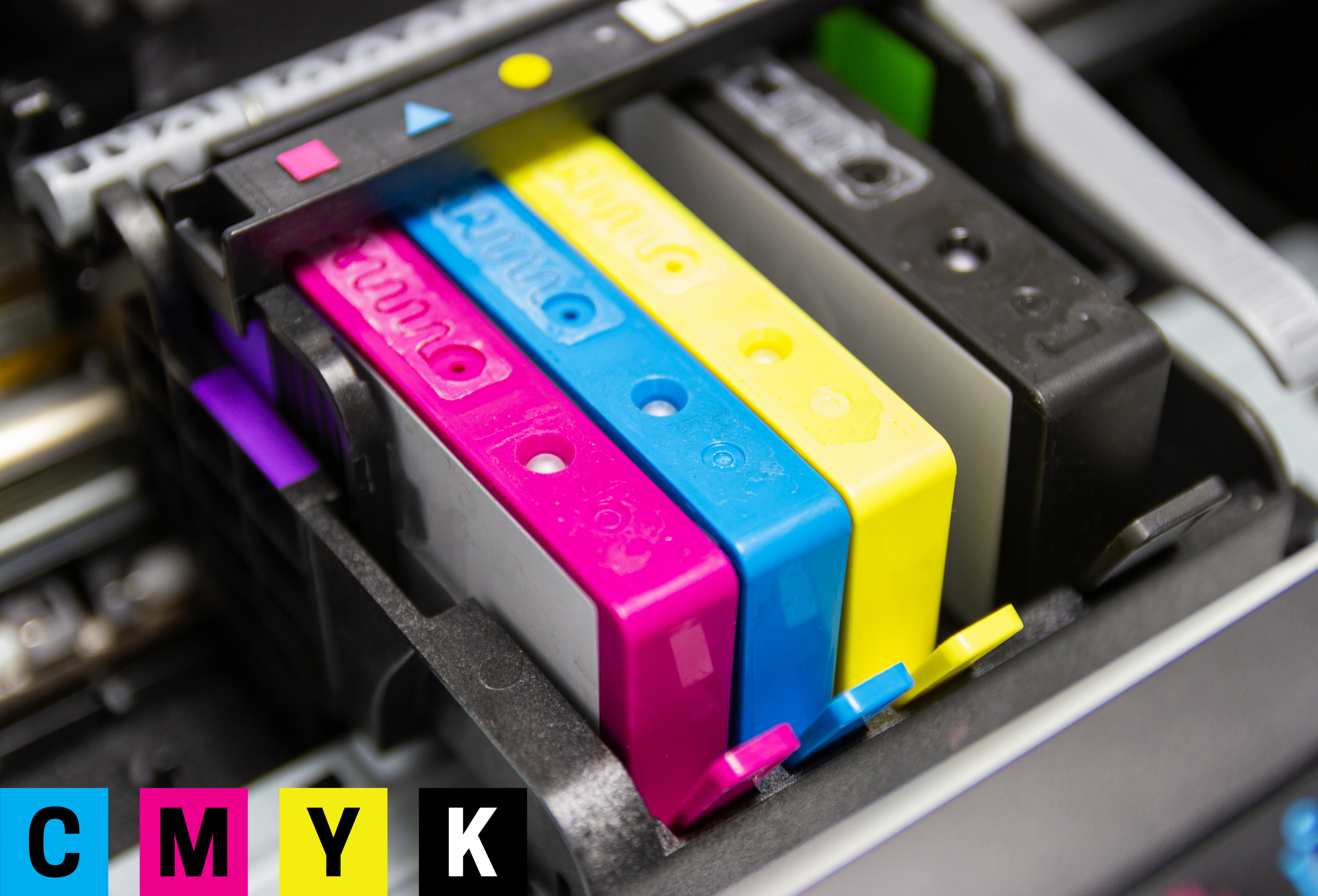Every business faces the same question: is color printing really worth the extra cost, or should you stick with black and white? With color prints costing up to five to fifteen times more per page, this decision can have a major impact on your office budget. For businesses across New Jersey and New York, understanding when to use color printing strategically can help control costs while maintaining professional impact.
Understanding the Cost Difference
The price gap between color and black-and-white printing is significant. Typical per-page costs are:
- Black and white: $0.01–$0.03 per page
- Color: $0.05–$0.15 per page
If your business prints 10,000 pages each month, using color for everything could total around $1,500 monthly compared to just $300 for black and white, a difference of more than $14,000 annually. The key is balance. Strategic color printing, using color only where it delivers value, keeps costs manageable while ensuring your documents make the right impression.
Color devices use four toner cartridges (cyan, magenta, yellow, black) and more complex imaging components, which explains the higher operating costs. But with the right print strategy, you can easily control these expenses.
When Color Printing Makes a Real Difference
1. Marketing Materials and Client Presentations
First impressions matter. Color printing instantly communicates quality, attention to detail, and professionalism. Materials such as brochures, sales presentations, product catalogs, and promotional flyers should always be printed in color. A well-designed, full-color presentation can be the deciding factor in closing a sale or winning a client. Even limited color use, like charts, logos, or key visuals, can make proposals more engaging and memorable. Learn more about Managed Print Services.
2. Data Visualization and Reports
Color helps transform complex information into clear, actionable insights. For financial reports, project dashboards, or analytical presentations, color-coded charts highlight trends and problem areas instantly. The few extra cents per page are minor compared to the value of better decisions and faster understanding among your team or stakeholders.
3. Training and Safety Materials
Training manuals, instructional guides, and safety documents benefit greatly from color printing. Color coding improves comprehension and retention, helping employees follow multi-step processes correctly. Safety materials rely on standardized color signals: red for danger, yellow for caution, green for safety, making color printing essential for compliance and clarity.
4. Technical Drawings and Plans
In industries like construction, architecture, and engineering, color-coded drawings are crucial. Trying to interpret black-and-white versions can lead to errors and miscommunication. For these businesses, color isn’t a luxury, it’s a necessity.
5. Brand-Critical Documents
Your brand identity depends on consistent visuals. Use color printing for letterhead, business cards, branded templates, and customer-facing materials. Maintaining brand colors reinforces recognition and professionalism. Internal documents, however, can remain in black and white without harming your image.
When Black and White Printing Makes More Sense
Internal Documents and Drafts
Routine internal communications, meeting notes, policy manuals, and drafts don’t need color. Keep these in black and white to reduce costs. Only print in color for finalized client-facing documents or presentations that benefit visually.
Educational Environments
Schools and universities, in particular, can benefit from restricting color printing. With teachers and students producing thousands of pages of worksheets, lesson plans, and reports each month, even small color-printing habits can quickly inflate budgets. Implementing print rules or user authentication helps educational institutions manage costs while keeping resources focused on learning.
High-Volume Jobs
For large print runs such as employee handbooks, newsletters, or procedure manuals, the cost difference between color and black and white adds up quickly. Unless color adds clarity, stick with monochrome, or combine a color cover page with black-and-white content for a balanced look.
View copier and printer options here.
Archival and Record Copies
Documents printed for filing or compliance purposes rarely need color. Contracts, invoices, and records are just as effective in black and white and save valuable printing budget.
How to Optimize Your Color Printing Strategy
Set Clear Print Policies
Establish office guidelines to define when color printing is allowed:
• Client-facing materials – Color approved
• Internal documents and drafts – Black and white only
Educate staff about cost differences and reinforce smart printing habits.
Use Authentication and Tracking
Modern print management software lets you track usage by user, department, or project. Requiring employees to log in before printing reduces unnecessary jobs, especially in color. These systems help identify waste, enforce rules, and promote accountability.
Adjust Default Settings
Configure printers to default to black and white, double-sided printing. Employees can manually switch to color when necessary. This simple adjustment can reduce color printing costs by up to 50%.
Consider Hybrid or Centralized Color Printing
Allow color printing only from a designated shared device. This extra step naturally limits unnecessary usage and ensures color is used intentionally. Or, for mixed-use documents, print color only on key pages, like charts, covers, or summaries to balance quality and cost.
Embrace Digital Distribution
Whenever possible, distribute materials digitally. Digital PDFs and presentations allow full use of color without spending a cent on toner or paper.
FAQs About Color vs. Black and White Printing
How much more expensive is color printing?
Color prints usually cost 5–15 times more per page than black and white, depending on your equipment and toner prices.
Can I reduce costs without eliminating color?
Yes, use color selectively for materials that require visual impact or clarity, and keep everything else in black and white.
Can printer settings help reduce costs?
Absolutely. Set default printing to black and white and use authentication to track color usage.
Does color printing use more energy?
Slightly, but toner costs represent the biggest difference. Energy use is typically negligible.
When should I print in color?
When it enhances comprehension, reinforces your brand, or improves client perception. Otherwise, stick with black and white.
Optimize Your Printing Strategy with Document Solutions
Balancing color and black-and-white printing starts with understanding your true needs and implementing a smart, cost-efficient plan. At Document Solutions, we help New Jersey and New York businesses manage print costs through Managed Print Services that include:
- Usage analysis and cost tracking
- Equipment optimization
- Policy development and staff training
- Ongoing reporting and strategy updates
Ready to control printing costs? Learn more about saving on printing costs , or call us today at (888) 880-3377 or contact us here for more information.





